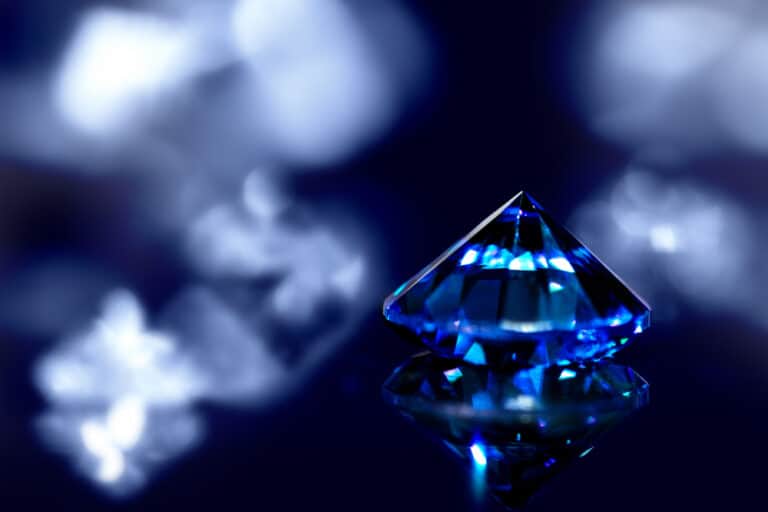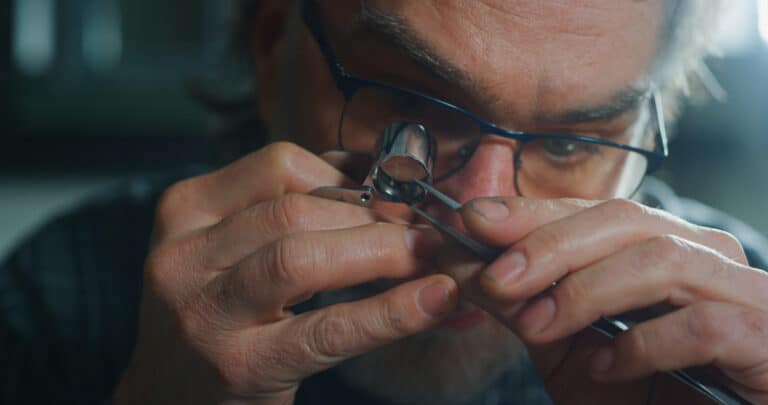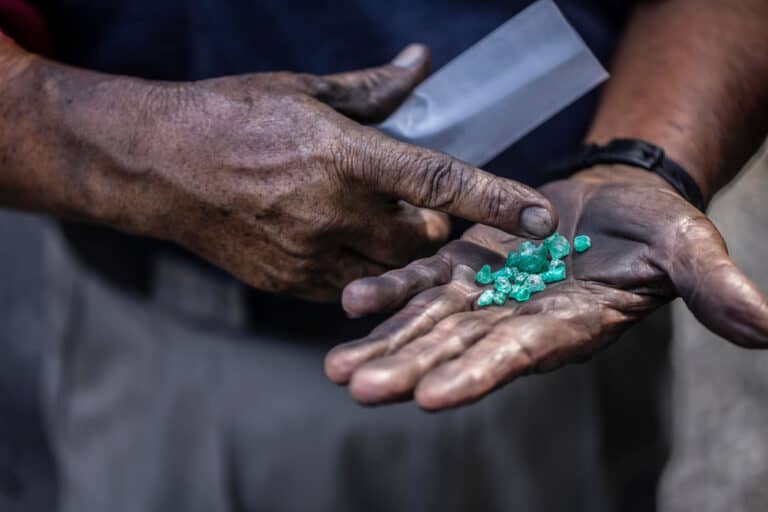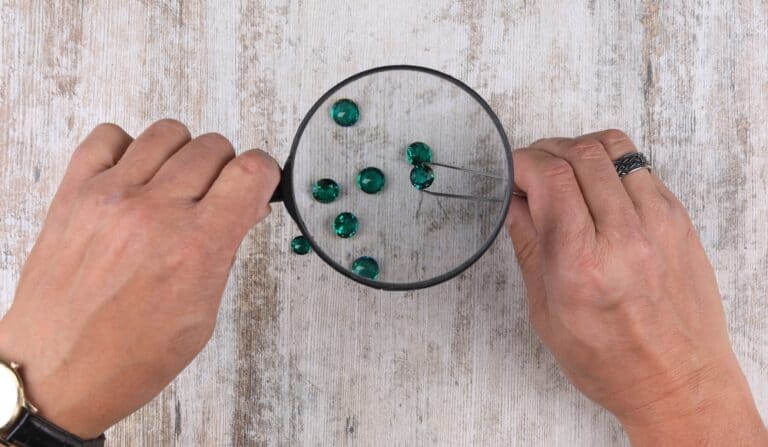If you’re interested in purchasing an emerald, you’ll likely come across natural and lab-created emeralds. This might lead you to question if lab-created emeralds are real emeralds. Also, What is the difference between a natural and lab-created emerald?
The chemical composition of a natural and lab-created emerald is the same. However, as natural emeralds are hard to come by, they are much more expensive than lab-created emeralds. Lab-created emeralds are manmade and have fewer inclusions than natural emeralds. They are also more affordable.
Suppose you’re wondering whether buying a natural or lab-created emerald is better. In that case, there are many things to consider, such as price, environmental impact, and value increase. We will discuss the differences between natural and lab-created emeralds to help you decide which type of emerald you should acquire.
Are Natural And Lab-Created Emeralds The Same?
Before discussing the differences and similarities between natural and lab-created emeralds, we must first establish what we mean by lab created and natural. Lab-created, or synthetic emeralds, are manmade emeralds created in a lab. These emeralds are made using scientific methods and equipment and don’t naturally come from the earth.
Natural emeralds are mined in various countries, such as Columbia and Brazil. These emeralds are produced when Beryllium escapes from the earth’s crust and moves into hydrothermal veins. Here, the elements harden and form emeralds.
When comparing natural and lab-created emeralds, there are a few aspects to consider. The first aspect we’ll look at is the physical composition of a lab-created and natural emerald. In this regard, lab-created and natural emeralds are the same.
Both lab-created and natural emeralds consist mainly of Beryllium. Natural and lab-created emeralds get their green color thanks to other elements, such as iron, vanadium, and chromium. Therefore, on a structural level, natural and lab-created emeralds are the same.
There are slight differences when you consider the appearance of a lab-created and natural emerald. Emeralds are soft and brittle stones. They score a 7.5 out of 10 on the Mohs scale (the scale used to measure the hardness of a gemstone). This means that emeralds are much softer than diamonds, which score a 10 on the Mohs scale.
Because emeralds are softer and more brittle, they often have tiny cracks and inclusions. Other minerals may also be visible in a natural emerald. However, these inclusions are expected when purchasing an emerald, and they add to the uniqueness of the stone.
Lab-created emeralds, on the other hand, have hardly any inclusions. Moreover, their inclusions are much smaller and less noticeable than those in a natural emerald.
Therefore, lab-created and natural emeralds are the same in terms of structural composition. However, they are made through different processes and differ in value. They also have varying degrees of inclusions.
Can You Tell A Lab Grown Emerald From A Natural Emerald?
Considering the similarities between natural and lab-created emeralds, you may wonder if one can tell the difference between the two. This is a debated topic, as some say that you can tell the difference with the naked eye, while others argue that you cannot.
One difference between natural and lab-created emeralds that you may notice is the presence of inclusions. As we have discussed, natural emeralds have more inclusions than lab-created emeralds. When looking closely at an emerald, you may notice if there are or aren’t inclusions in the stone.
Another difference is the color. Although natural and lab-created emeralds both have a green hue, natural emeralds have a different color intensity and richness. Emeralds vary from light green to intense forest green. Experts say that lab-created emeralds are duller than natural ones and have an “off” color.
Therefore, it is possible to tell the difference between a lab-created and natural emerald. However, most people won’t be able to tell if it’s a natural or lab-created emerald just by looking at it. They may only notice the difference when comparing a lab-created and natural emerald side by side.
Price Difference Between Natural And Lab Grown Emeralds
Another consideration when deciding between a natural and lab-created emerald is the price difference. Natural emeralds are much rarer than lab-created ones. Therefore, they are also more valuable and cost more.
Emeralds are graded from B to AAA, depending on their quality. B is the lowest quality emerald, while AAA is the highest quality. The rating of an emerald depends on its color and clarity. For example, a AAA emerald will have an intense green color and fewer inclusions. The same factors are considered when determining the grading of a lab-created emerald.
However, as natural emeralds are rarer and harder to find, you will notice a significant price difference between a AAA lab-created emerald and a AAA natural emerald. In addition, a AAA natural emerald will likely have more inclusions than a AAA lab-created one.
This shows you that a natural emerald is worth more than a lab-created one despite having more inclusions and imperfections. What’s more, natural emeralds increase in value over time, which is not true for lab-created emeralds.
While a AAA lab-created emerald will cost more than any other lab-created precious gem, it isn’t worth as much as a natural emerald. It also doesn’t keep its value as well as a natural emerald, nor does it grow in value as a natural one.
These factors might make you think buying a natural emerald is better than a lab-created one. However, which one you buy depends on various factors.
Should You Buy A Natural Or Lab Created Emerald?
Suppose you aim to buy a truly unique gemstone with a high value that will grow over time. In that case, you will consider a natural emerald. You can consider a smaller stone or one with a basic emerald or round cut if you don’t want to spend as much. You may also consider buying a AA or A emerald instead of a AAA one.
However, if you are on a tighter budget and want a unique-looking gemstone without paying a fortune, a lab-created emerald will still give you what you are looking for. Although its value isn’t as high as a natural emerald’s, it is still a beautiful gemstone.
In addition, lab-created emeralds are more environmentally friendly than natural emeralds. This is because the mining industry causes pollution and soil erosion, which is not the case with lab-created stones.
Therefore, while a natural emerald certainly has its perks, there is no reason why you cannot confidently buy a lab-created emerald if you want to. In all honesty, the chances of someone noticing whether your emerald is natural or lab created are very slim, especially if they aren’t making a side-by-side comparison.

Conclusion
Lab-created and natural emeralds have the same physical composition. Lab-created emeralds are manmade, while natural emeralds are formed in the earth’s crust. Natural emeralds usually have more inclusions and imperfections than lab-created ones, and their color is also more intense.
Considering the scarcity of natural emeralds, they are worth more than lab-created ones. They, therefore, cost more to purchase, but they also retain their value better than lab-created emeralds. Of course, which one you buy depends on your priorities and budget.






